How Naresh Goyal became the Gordon Gekko of Indian Commercial Aviation!
- Prashant Kavi (PK)

- Feb 20
- 15 min read
Updated: Feb 26
Greed .. [for lack of a better word] .. is good!
-Gordon Gekko, Wall Street (1987)
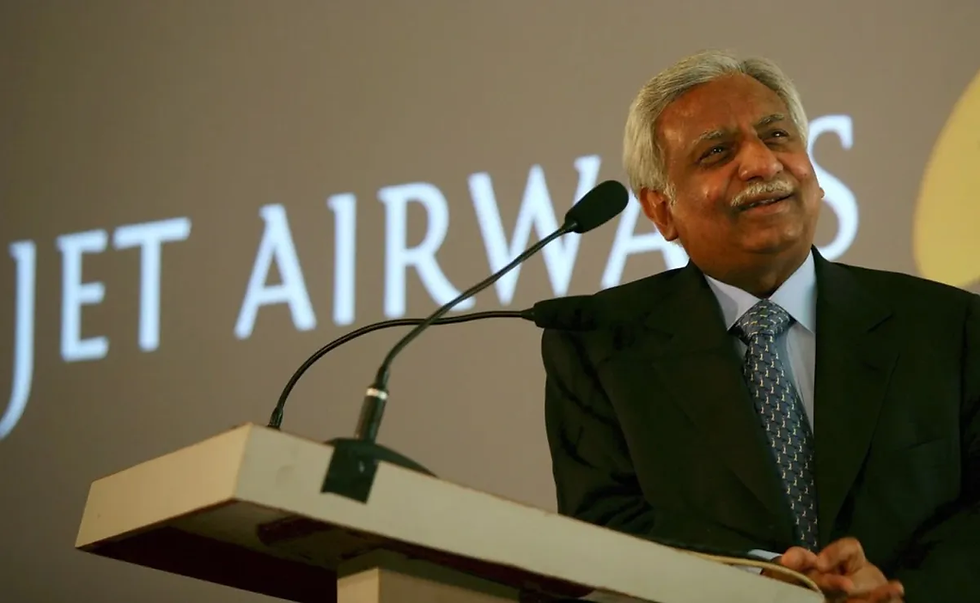
Prologue
In what could easily be described as a momentous development for Indian commercial aviation, the highest court in India ordered the liquidation of Jet Airways (9W) on November 7th, 2024; bringing the curtain down on over a three-decade existence of one of the most prominent airline brands to have emerged out of India. Although, the airline had ceased operations under its original ownership in April 2019 after declaring bankruptcy, yet, efforts to revive and restart the airline by a consortium of investors from 2020 onwards, came a cropper.
It was sometime in late 2013 that I happened to call on a former boss, an expatriate, then in a senior leadership role with Jet Airways (9W), at the airline’s Mumbai HQ. As we discussed the challenges of operating in the Indian environment, in a moment of exasperated candor he said something that I clearly remember to this day, “you know, the most challenging part here has been to save this airline from the ‘big man’ himself”; the ‘Big Man’ being an oblique reference to Naresh Goyal, the founder and Chairman of Jet Airways!
It wasn’t hard to understand the underlying message of that statement given that there were enough stories floating around of Naresh Goyal’s growing interference in the running of day-to-day operations of the airline, that had the Jet leadership all riled up!

The Early Days: To be the best
But it wasn’t so to start with. In fact, I heard it first-hand from a former colleague, who headed Human Resources for Jet Airways in its formative years, Naresh Goyal's emphatic insistence on hiring the very best from the industry, particularly in the senior leadership positions. And he gave them a lot of latitude (and money), to run the airline. But it appears that as the airline grew in prominence and network, so did Naresh Goyal’s ego and interference.
It had to be driving ambition of the highest order for a very unremarkable man (both in terms of his physical attributes and means), to have built a world-class airline from scratch and become a billionaire on the back of it. Although, the proverbial rags-to-riches story, did finally come full circle in Naresh Goyal’s case.

Many industry veterans who had the opportunity to work with him, unanimously attest to Naresh Goyal’s singular and sincere ambition of building the, ‘best Indian airline to compete globally' and rival the best in the world. Singapore Airlines (SQ) incidentally, was his stated gold standard. Not unexpectedly then, he ensured (through some shrewd political maneuvering) that Singapore Airlines was denied a foothold in the country when the TATAs wanted to bring them in as part of a JV.
For a man who came from very modest means, Naresh Goyal completely imbibed the thrifty ethos of the 'baniya' community in India, to which he belonged. The 'baniya's' are a mercantile community from the western and northern states of India, predominantly involved in trading, money-lending and other such commercial vocations, with a decidedly ingrained knack for managing money.
And while Naresh Goyal was a man accustomed to austerity, both by design and circumstances in his early days, the only trait of his personality to qualify as anything but frugal, was his searing ambition.
So while working in a relative's General Sales Agency (GSA) for airlines in the early 70s, where he started as a cashier, he quickly learnt the ropes of an airline's commercial side of the business and swiftly rose thru the ranks. In the airline world, a GSA is akin to an extension of the airline in a geographic location, appointed to sell all the products of the airline (passenger tickets and/or airfreight capacity) on its behalf. By all available accounts, Naresh Goyal slogged it out and inched his way up to eventually acquiring a GSA himself under the aegis of his newly launched venture, Jetair. A key attribute of Naresh Goyal and one that is repeatedly highlighted when discussing his persona, was his shrewd ability to 'network and make friends in the right places'. He put that quality to good use and was able to rope in two Middle Eastern carriers - Kuwait Airways (KU) and Gulf Air (GF), with whom he had worked previously, to invest in his startup airline project. Thus was born Jet Airways in 1993, although it was initially licensed to operate as an air taxi operator (allowed to operate as a private carrier but without a printed schedule) under the then rules of India's newly unveiled Open Sky Policy.
The Growth Phase: recognition and hubris sets in
It was in February 2005 that Jet Airways made a smashing public debut with an IPO on the Indian bourse and everyone hailed Naresh Goyal as a 'visionary leader', a milestone that also marked him as a billionaire for the first time. Not bad for a boy from the hinterland, who started with almost nothing. Admittedly though, Goyal’s sharp business sense (and deft political maneuvering) helped the airline thrive in a competitive market, allowing for steady expansion both at home and abroad. In a little over a decade since its launch, Jet Airways was operating over 200 flights daily and flew to 61 destinations, including 7 international touchpoints with a fleet of about 30 aircraft. And importantly, delivering on Naresh Goyal's stated promise of offering a world-class experience.

Naresh Goyal, now the darling of the business world was being courted by the high and the mighty which also included a litany of Bollywood stars. As a compulsive opportunist, Naresh Goyal made full use of this proximity to promote his airline wherever possible. And by now, Naresh Goyal was fairly well-connected globally too. He liberally name-dropped his way to further expand his interests and those of Jet Airways. Besides, he had the Indian political class eating out of his hands. Among the many allegations against him, that kept coming to the surface off and on (not without reason), were how he had the entire Aviation ministry and its appendages in his pocket, by extending freebies for undue favors granted. Hubris was also setting in as Naresh Goyal felt buoyed by the kinetic momentum of his achievements and started believing he was invincible - a fact corroborated by someone who was very close to him at the time. Such was the overweening confidence that the executive team was directed to focus on doing everything that would ensure the primacy of Jet's operations, even if it meant a few rules had to be broken in the process; the Chairman would sort things out [with his politico friends] subsequently!
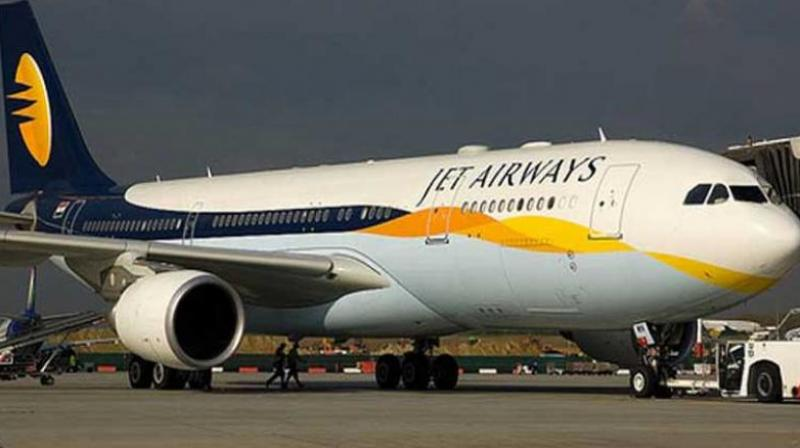
The Big Blunder: the Air Sahara acquisition

Background first: Air Sahara or Sahara India Airlines (S2) as it was incorporated in 1991 to begin with, was promoted by the controversial Sahara India Pariwar (a diversified business conglomerate) and its founder Subrata Roy Sahara, who served time in jail following a legal dispute with India's market regulator, which alleged his company was duping millions of small investors by running a ponzi scheme. Much like its founder, Air Sahara's chequered life as one of the earliest private airlines in India (alongside Jet Airways) was a case of rapid rise and an equally rapid descent. Reportedly, propped up by dubious money, unholy political connections, mired in nepotism and run by corporate lackeys overseeing a bloated workforce, Air Sahara was never the airline, India could have ever been proud of.
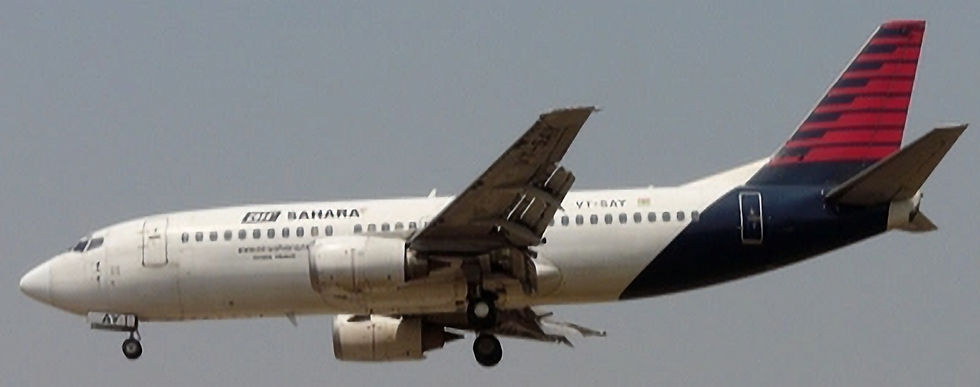
Although, it had built up an all-Boeing 737 fleet of 36 (which included a clutch of CRJs too plus a couple of 767s on lease) at its peak and was serving a slew of domestic and international destinations, yet it remained an also-ran, with mediocre service and a blemished safety record. And about 2005, the airline had already started its descent by losing money and market share, thus weighing down heavily on the Sahara Group.
Around this time, there were three factors that proved to be fortuitous for Subrata Roy Sahara in helping him offload the liability that Air Sahara was fast becoming. The first had to be the timing and the rise of Kingfisher Airlines (KF), as it launched operations in May 2005. Kingfisher had been floated with much fanfare by another (subsequently convicted and disgraced) businessman - Vijay Mallya, and soon became a hit with the flying public in no time on the back of a promise of 'good times in the skies', a tagline borrowed from its namesake beer brand. This led to the second factor and which was the desperation that Naresh Goyal exhibited to acquire Air Sahara, in a bid to consolidate and thereby augment Jet Airways' market share in the face of impending competition from Kingfisher Airlines. The third was, Subrata Roy Sahara's thick friendship with a maverick North Indian politician, now deceased, who was the ultimate political fixer and perhaps the most ingenious of his times. This gent was reportedly set upon the task of broking a deal between his benefactor and Naresh Goyal, as he knew Naresh Goyal well enough too, given that he was accustomed to working on both sides of the aisle!
The stage was thus set and an initial figure of about USD 500 million was talked about as the asking price for Air Sahara in January 2006. Ordinarily a tough negotiator, Naresh Goyal's vision was clearly clouded by the pressures his airline was facing and that brought about a huge error of judgement, when he committed to the price. And such was the desperation to go thru the deal that the due-diligence of Air Sahara's assets (particularly the fleet) was rushed leading to a terrible later discovery that half the Air Sahara fleet had maintenance issues and required huge additional investment to get them airworthy again. Besides, Air Sahara had systemic problems all across its various functional departments and was running its operations under most archaic conditions. In resolute defence of his decision though, Naresh Goyal touted the value of airport slots (particularly those at London Heathrow besides Mumbai and Delhi), infrastructure including maintenance facilities and pilots.
But providentially for Naresh Goyal, there emerged a roadblock to this deal which was primarily induced by disputes around assets and infrastructure transfers under a 'newly released' policy directive by the Ministry of Civil Aviation on M&As and Jet Airways withdrew from the deal acrimoniously, on the face of it.
Interestingly, there were two theories floated afterwards, as part of a whisper campaign to analyze the failure of the deal. One theory was to do with Naresh Goyal's belated realization that he was paying way too much and therefore got his friends in the Ministry of Civil Aviation to come up with a contentious and conveniently timed M&A policy that would allow him to wriggle out of the deal on technical grounds. The other being that there were two political parties in the fray for claiming the spoils of the deal and one of these (which also controlled the Ministry of Civil Aviation) was miffed with its share and therefore decided to introduce new policy directives designed at derailing the deal.
Whatever be the truth, Naresh Goyal and Jet Airways avoided a near kamikaze dive to premature self-destruction!
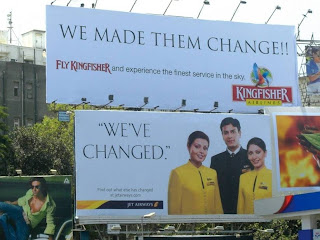
But a restless Naresh Goyal and this time a rather more desperate Subrata Roy Sahara, got back again to the table one more time, brokered by the indefatigable political fixer friend and this was almost a year later, by which time it was evident that Air Sahara was going to go under. Naresh Goyal, suitably chastened in the aftermath of the first bid, this time straightaway offered half the previous price, but eventually settled for a 40% discount to close the deal at USD 340 million and thought he had wrangled a great deal; or so he thought! The fact was, lossmaking Air Sahara had only deteriorated in the past year and was perhaps not even worth half the final price eventually paid because the entire valuation of the airline was highly flawed to begin with, as was reported later. Speaking in the aftermath of finalizing the deal, Naresh Goyal had this to say:

"The deal is very good for business, our shareholders, [and] the industry.. it will prove that in India things can be done better than anywhere in the world."
Air Sahara was quickly rebranded 'JetLite' and positioned as the budget arm of Jet Airways, ostensibly to prep for existing and emerging competition from low cost carriers (LCCs), including an ascendant IndiGo. But JetLite could never really fend that competition, given the Air Sahara legacy baggage that continuously bogged down operations. Besides and more importantly, JetLite was fighting a battle with relatively new players who's operations were built ground-up from a low cost base, from the very start. While conversely, Jet Airways as a full-service carrier was built on a far higher cost base and therefore it constantly struggled to drive any meaningful synergy between its full-service operation and the 'budget' operations of JetLite.
The unit operating cost (denoted as: operating cost per available seat kilometer) is the holy grail for LCCs and the difference in this metric between LCCs and full-service carriers, is almost about 30% lower for the LCCs. And JetLite could never manage to get there in the face of aggressive LCC pricing, in an already cutthroat Indian market.
The Downward Spiral: Etihad and the spanner in the works
An old Sanskrit proverb, loosely translated to English says: 'In times of impending doom, judgement falters'. It wasn't long before Naresh Goyal realized the folly of his decision to buy Air Sahara, at all. JetLite the revamped avatar of Air Sahara, was perpetually lossmaking, add to which the operations were consistently plagued with problems owing to unresolved merger issues. Besides the acquisition brought tremendous financial strain when coupled with the fact that Jet Airways had already invested heavily in its fleet and infrastructure expansion, significantly increasing operational costs. By 2012, the airline owed close to $2 billion, a weight that would become the proverbial 'millstone around the neck' and eventually bring down Jet Airways.
But Naresh Goyal was the quintessential survivor with canny survival instincts. Aware of the impending financial doom his decisions had led the airline to, he saw the only way out was with foreign funding. Indian banks and financial institutions were wary of funding domestic airlines after the Kingfisher debacle. Ironically enough, when Jet Airways was in its prime and sitting dominant in the Indian airspace, Naresh Goyal became a strident critic of funding by foreign airlines in Indian carriers, but now with characteristic gumption, he unhesitatingly reached out to his contacts in the Middle East once again.
Driving home the point at the time, Naresh Goyal stated:
"the infusion of foreign direct investment in the Indian aviation sector will result in economies of scale, grow traffic at Indian airports, and create job opportunities. It will greatly benefit all our stakeholders whilst significantly benefitting our guests who will now have access to a more expanded global network, enhancing connectivity for tourists, business travelers, Indian families and the wider travelling public."
Just a few years prior, it was the same Naresh Goyal who had vehemently fought to restrict such foreign investment, particualrly from Singapore Airlines. Although, this volte-face was publicly acknowledged too:
"I am entitled to change my view as the whole world is changing. Today, I may not need FDI, but tomorrow I may need."
Enter Etihad Airways (EY). Etihad in 2006 was headed by Australian expat, James Hogan, who between 2011 and 2015, strung together some high profile global acquisitions (typically partial stakes in struggling carriers), in various parts of the world in a bid to extend Etihad's footprint. This strategy was most likely pursued to swiftly chart its own winning course against formidable neighborhood rivals - Emirates (EK) and Qatar Airways (QR), but ended up in an epic disaster that nearly bankrupted the airline.

Providence was once again on the side of Naresh Goyal as Etihad smelled the opportunity with an investment in Jet to finally take control of the lucrative South Asia feeder traffic (largely) emerging out of India, to be fed via its Abu Dhabi hub to connect onwards into Europe and North America. A near perfect setting for Etihad , except that there was still limited access to the Indian market for Etihad to make this investment work decisively in its favour. So as part of a potential investment in a struggling Jet Airways, Etihad also demanded a substantial increase in capacity for itself, both into and out of India under revamped bilaterals. Naresh Goyal, now a man-on-a-mission, started working the corridors of power and presented a sort of ultimatum to the Indian Govt., to suggest that this was the only chance to save Jet Airways from going under with massive debt on the books of government controlled banks and prevent a PR disaster for Indian aviation, with thousands of its employees being made redundant. So as a precursor to the Etihad investment, it is alleged that Naresh Goyal first had the government allow FDI (Foreign Direct Investment) by foreign airlines in Indian carriers to 49%, a few months prior in September 2012 [Note: until September 2012 FDI in the Indian aviation sector including airlines, was only permitted to 'other foreign investors' which excluded foreign airlines]. And then it is further alleged, that he forced the Ministry of Civil Aviation to grant enhanced traffic rights on the India-Abu Dhabi sector, before announcing in April 2013 that Etihad and Jet had entered into a 'strategic alliance'. This deal saw Etihad take a nearly 25% stake in Jet Airways for a shade under USD 400 million.

Knowing fully well the weakened state of Naresh Goyal, Etihad wasted no time in taking control and started dictating terms in the garb of restructuring. Some key senior personnel from Etihad were embedded into senior operational roles at Jet and the network was redesigned to ensure most of the outbound international traffic was fed into its Abu Dhabi hub. For once, Naresh Goyal could only watch helplessly from the sidelines as he saw his airline gradually slip away from his grasp. Happy with the initial results, Etihad now offered to increase its stake in Jet Airways but preconditioned it to Naresh Goyal reducing his own stake. And while Naresh Goyal knew the precarious condition of Jet's finances in spite of Etihad's lifeline, yet stubbornly hung on to his majority, but increasingly titular stake.
The Endgame
About 2014, Jet Airways started floundering domestically on the back of some serious competition from Indian LCCs such as SpiceJet and IndiGo, besides having no say on its premium international network, which was now under the complete control of Etihad. Unable to cope up with the domestic fare war, Jet Airways ditched its budget subsidiary and turned completely full-service. However, the precarious financial condition meant that the airline started to cut corners leading to operational issues, frequent flight cancellations, delays, and dissatisfied customers, which damaged the airline's image. What was once a celebrated brand, now struggled to protect its reputation and credibility.
A close aide revealed how during this time Naresh Goyal's management style became more high-handed, unpredictable and irrational. Straining under the burden of declining revenues and frustrated on not being able to exercise full control as he was always used to in pre-Etihad days, Naresh Goyal's tempestuous actions first led to his close confidantes gradually disengage, followed by close friends. At this time he also came under intense media scrutiny, particularly for his refusal to relinquish his stake for additional investment, even as Jet Airways piled on debt and struggled with cash flow. And as if all this wasn't enough, his detractors also chose to highlight Naresh Goyal's links to the Indian underworld and alleged funding of Jet Airways with laundered money routed through shell companies in the tax haven of Isle of Man, which is where Jet Airways' promoter company (Tailwinds Limited) was also based. While this talk of Naresh Goyal and Jet Airways' underworld links was always around somewhat unobtrusively, yet in 2016 it was pitched front and center with the release of the book: 'A Feast of Vultures: The Hidden Business of Democracy in India', authored by Indian journalist Josy Joseph. This book documented the alleged links between Jet Airways and the Indian underworld, publicly for the first time. Meanwhile, operational inefficiencies continued to spiral, pushing the airline closer to the brink.
By 2018 things had started coming apart for Jet Airways and Naresh Goyal was fighting to stay in the game, but stubbornly refused to let go of control. And in March 2019 when the collapse became imminent, Naresh Goyal along with his wife Anita Goyal, who was also on the board of Jet, eventually resigned as Directors. By April, it was game-over as suppliers began turning off the taps in the absence of payments, starting with fuel; the fleet was grounded and operations suspended, leading to a wretched albeit predictable end to a nearly three-decade dream run for Naresh Goyal and Jet Airways.
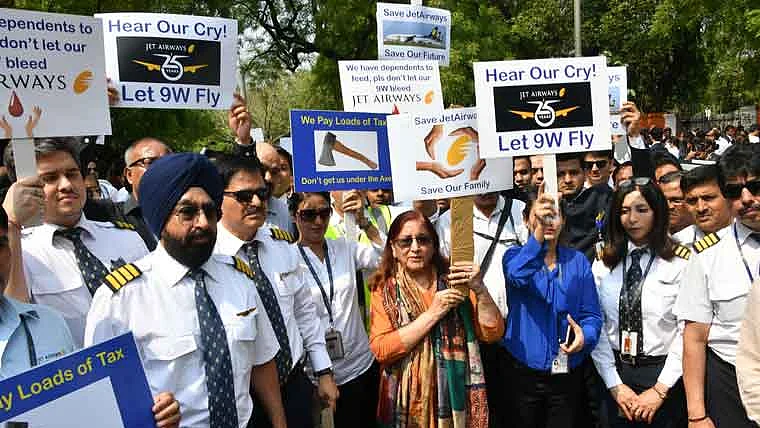
The misery didn't end there though, as both Naresh Goyal and his wife suffered the ignominy of being hauled off an Emirates flight bound for Dubai, at Mumbai Airport in May 2019 and detained by immigration authorities, to prevent them from leaving the country. This was on the back of a 'lookout notice', issued for both of them under an ongoing investigation on money laundering charges and foreign exchange violations. Eventually, the husband and wife duo were arrested in September and November 2023 respectively, after investigations concluded that Naresh Goyal and his family, siphoned-off funds from bank loans to Jet Airways, for personal use and expenditure.
Naresh Goyal's wife passed away in May 2024, after succumbing to terminal cancer and Naresh Goyal, at the time of writing this article is out on bail on medical grounds, ailing and fighting terminal cancer himself.

Epilogue
In Oliver Stone's 1987 classic "Wall Street," Michael Douglas portrays Gordon Gekko, a ruthless and unscrupulous corporate raider, who delivers the notorious, "greed is good" speech. This speech epitomizes his relentless quest for wealth by all means, mostly dubious, manipulative and devoid of ethical implications, thus representing extreme avarice.
And while Jet Airways did fleetingly come close to becoming a world-class airline that its founder had always wanted it to be and made him a transient billionaire in the process, but its legacy will always be tainted by the manner in which Naresh Goyal set out to achieve it - much like Gordon Gekko!
"The main thing about money, [Bud], is that it makes you do things you don't want to do."
-Lou Manheim, Wall Street (1987)





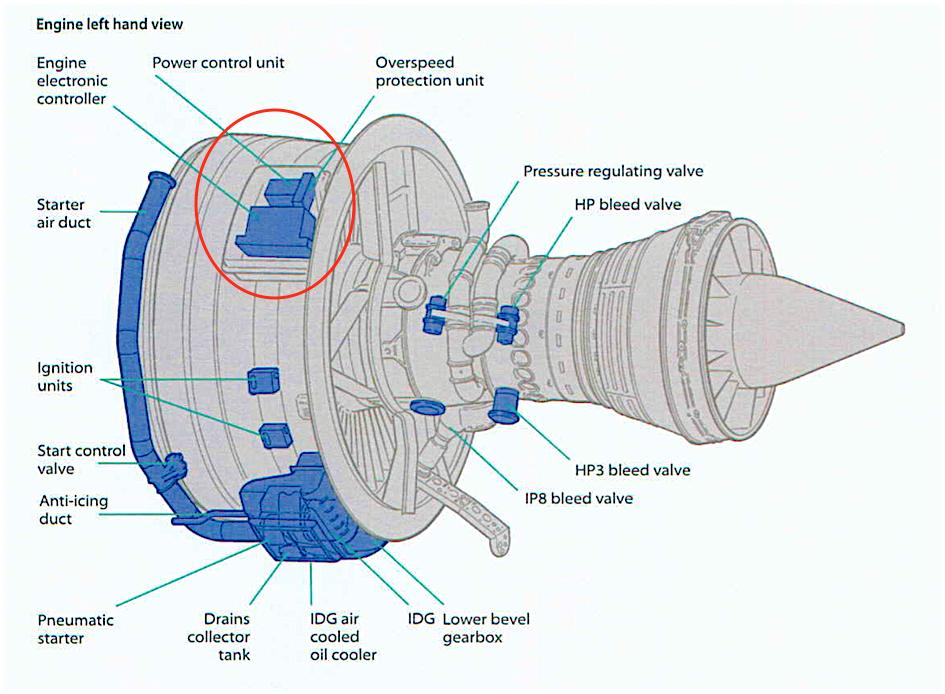

Comments